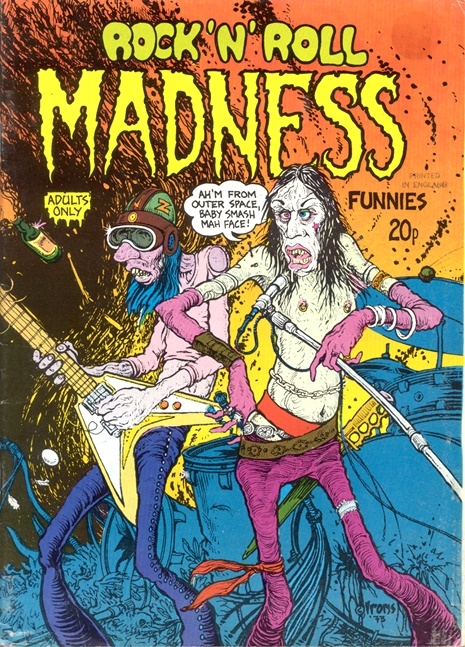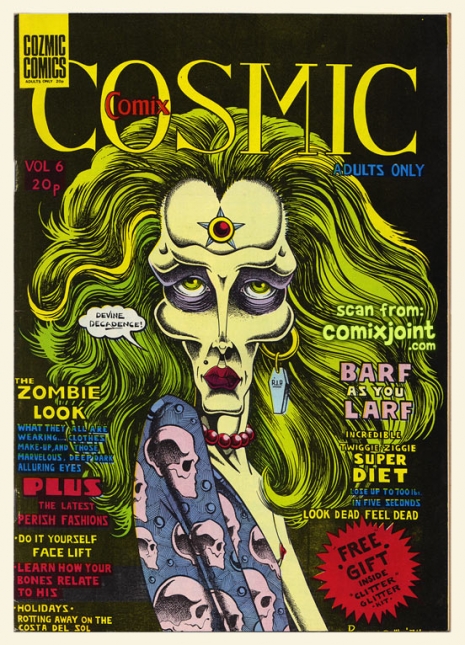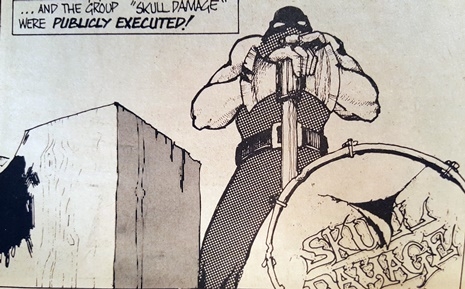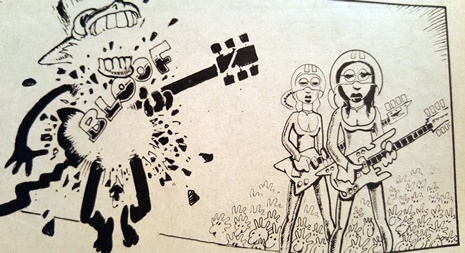
Ray Nelson’s short story “Eight O’Clock in the Morning,” on which John Carpenter based They Live, was first published in the November 1963 issue of The Magazine of Fantasy & Science Fiction. But Carpenter first encountered the story 23 years later, in its comic book adaptation, “Nada.”
The seven-page story illustrated by Bill Wray ran in Alien Encounters #6. The comic follows Nelson’s story pretty closely, and there are strong resemblances between the stories of They Live and “Nada,” especially the “storming the reality studio” climax (of which Nelson’s acquaintance William S. Burroughs would surely have approved) common to all versions of the story. But there are differences. Only Wray’s includes a Circle Jerks poster.

The opening panels of ‘Nada’ (available in its entirety here)
More significantly, the famous Hofmann (i.e., LSD) sunglasses do not appear in Nelson’s story or in Wray’s comic. Nelson’s hero, George Nada, goes to the theater to watch a live hypnosis act, and when he hears the command to awake at the show’s end, he suddenly realizes that he’s surrounded by outer-space aliens. The Fascinators, “the rulers of Earth,” are reptilian beings with too many eyes who control human beings through suggestion. In Nelson’s story, Nada doesn’t just see their awful stomach-turning alien monstrosity after waking up from his trance, he hears the terrible croaking alien language they speak to one another, and a constant stream of subliminal commands delivered in “bird-like” voices. The aliens tell him to “obey,” “work,” and—now that he’s on to them—die:
Suddenly the phone rang.
George picked it up. It was one of the Fascinators.
“Hello,” it squawked. “This is your control, Chief of Police Robinson. You are an old man, George Nada. Tomorrow morning at eight o’clock, your heart will stop. Please repeat.”
“I am an old man,” said George. “Tomorrow morning at eight o’clock, my heart will stop.”
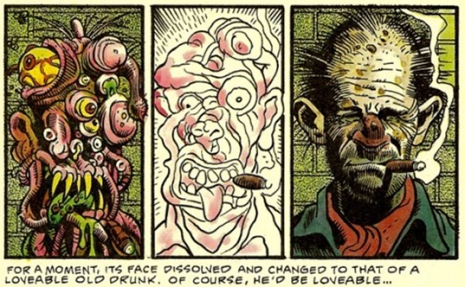
George Nada’s cruelty to his girlfriend (fiancee, in the comic), Lil, makes him an unsympathetic character and suggests that he might be seeing space reptiles everywhere because he is a delusional nutcase, not a possibility Carpenter’s movie entertains. When he sets out to “awaken” others, Nada first tries beating up the woman in his life. After violence doesn’t work, he steals her car, leaving her bound and gagged on the bed, alone in her apartment with a dead body, terrified. There is none of the comradely spirit or cheerful good-fellowship of the fight scene in They Live.
Ray Nelson’s bio is recommended reading. He claims to be the inventor of the propeller beanie and says that, as a young man, “he worked with Michael Moorcock smuggling Henry Miller books out of France.”
And John Carpenter still has some They Live sunglasses left over from his bubblegum-lacking, ass-withering Anthology tour. He forcefully repudiated anti-Semitic interpretations of They Live on Twitter earlier this year:
THEY LIVE is about yuppies and unrestrained capitalism. It has nothing to do with Jewish control of the world, which is slander and a lie.
— John Carpenter (@TheHorrorMaster) January 4, 2017






